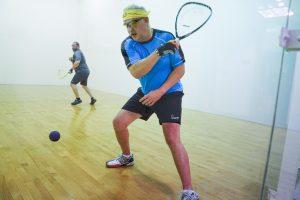We may earn money or products from the companies mentioned in this post.
Introduction

Tennis, a sport enjoyed by millions around the world, has a history that dates back centuries From its humble beginnings on grassy courts to the fast-paced game we know today, tennis has seen many changes over time One crucial element of the game is the tennis ball itself In this article, we will delve into the fascinating history of tennis balls, exploring their early materials and how they have evolved into the modern-day balls used in professional matches
Early Tennis Ball Materials
In the early days of tennis, various materials were used to make tennis balls One of the earliest known materials was leather stuffed with hair or wool These primitive balls had a soft texture and were not very durable, often losing their shape quickly during gameplay
As the popularity of tennis grew in Europe during the 16th and 17th centuries, new materials were experimented with to improve ball quality Cork became a popular choice due to its lightweight nature and ability to bounce well on grass courts However, cork-based balls still lacked durability
Innovation continued as manufacturers began using rubber in combination with other materials such as flannel or cloth coverings to enhance ball performance This marked a significant step forward in creating more consistent and resilient tennis balls
Evolution of the Modern Tennis Ball
The modern tennis ball as we know it today owes much of its development to an Englishman named Major Walter Clopton Wingfield In 1873, Wingfield patented his version of lawn tennis and introduced standardized rules for gameplay
Wingfield’s innovation extended beyond just rules; he also played a crucial role in improving tennis ball design He introduced a rubber core covered with white flannel stitched together tightly to create a more durable and predictable ball
Over the years, manufacturers continued to refine tennis ball construction In the early 20th century, advancements in technology allowed for the mass production of pressurized balls These pressurized balls had a hollow rubber core filled with air, providing a consistent bounce and improved gameplay experience
In recent times, further modifications have been made to tennis balls to cater to different court surfaces and playing conditions Balls designed for grass courts have shorter fibers on their covers compared to those used on hard courts or clay courts
The International Tennis Federation (ITF) is responsible for regulating and approving tennis ball specifications used in professional tournaments worldwide They set standards for size, weight, compression, and bounce height to ensure fair play across all matches
In conclusion,
the evolution of tennis balls from simple leather pouches filled with hair or wool to technologically advanced pressurized balls has significantly impacted the game of tennis The modern-day tennis ball provides consistency, durability, and predictable performance that enhances players’ abilities on different court surfaces
Types of Tennis Balls

Pressurized Tennis Balls
Tennis balls are typically categorized into different types based on their characteristics and performance advantages One popular type is pressurized tennis balls These balls are filled with air and sealed tightly, creating internal pressure that gives them a lively bounce
Pressurized tennis balls are known for their consistent and predictable flight path, making them ideal for competitive play Their high bounce and quick speed off the racket allow players to execute powerful shots with precision They are commonly used in professional tournaments and by experienced players looking for optimal performance
These balls perform best on hard court surfaces, such as concrete or asphalt, where they offer excellent grip and control However, they may lose their pressure over time, affecting their performance and durability The lifespan of pressurized tennis balls can vary depending on factors like playing frequency and surface conditions
Pressureless Tennis Balls
In contrast to pressurized tennis balls, pressureless balls do not have an internal pressure chamber Instead, they are made from solid rubber with a durable felt cover This construction gives them a unique set of characteristics that differ from pressurized balls
Pressureless tennis balls offer a longer lifespan compared to pressurized ones because they don’t lose pressure over time This makes them more cost-effective in the long run for frequent players who want to avoid constantly replacing worn-out balls
While pressureless tennis balls may not provide the same level of speed or bounce as pressurized ones, they still offer great control and consistency during play They work well on various playing surfaces, including clay courts and indoor courts with carpet or wood flooring
High-Altitude Tennis Balls
Playing tennis at high altitudes presents unique challenges due to the lower air density, which affects ball flight and bounce To address these issues, specialized high-altitude tennis balls are designed with specific characteristics that optimize their performance in such environments
High-altitude tennis balls are pressurized balls with a slightly reduced internal pressure compared to regular ones This adjustment helps offset the decreased air resistance at higher altitudes, allowing for better control and more accurate shots
Using high-altitude specific tennis balls is essential when playing at higher elevations as they enable players to adapt to the unique conditions and maintain a consistent game These balls are commonly used in mountainous regions or areas with altitudes above 4,000 feet
Junior / Training / Stage Tennis Balls
Tennis balls designed for junior players or training purposes come in different stages that cater to different skill levels and age groups These specialized balls help young players develop their technique, coordination, and confidence on the court
The various stages of junior or training tennis balls include foam balls, low-compression felt balls, and standard felt balls Foam balls are soft and lightweight, ideal for beginners who are just starting to learn the sport Low-compression felt balls have a slower speed and lower bounce, allowing intermediate players to practice their strokes effectively
As young players progress in their skills, they eventually transition to using standard felt tennis balls similar to those used by professional players These progressive stages of junior or training tennis balls provide an optimal learning environment for young athletes while promoting proper technique and skill development
How to Choose the Best Tennis Balls for You

Playing Level Considerations
When it comes to choosing the best tennis balls, your playing level is an important factor to consider Different balls are designed to meet the needs of players at different skill levels Let’s take a look at what you should consider based on your playing level:
Beginner Players
If you’re just starting out in the world of tennis, it’s important to choose tennis balls that offer durability and consistency Look for balls that have a lower compression rating, as they will provide a slower bounce and allow you more time to react This can help build your confidence as you develop your skills on the court
Intermediate Players
As an intermediate player, you’re likely looking for a balance between control and power Opt for tennis balls with medium compression ratings, which offer a good combination of speed and control These balls will give you enough power without sacrificing accuracy, allowing you to enhance your game
Advanced Players
If you’re an advanced player who demands maximum performance from their tennis balls, go for high-compression options These balls are designed to deliver exceptional speed and responsiveness off the racket, giving you ultimate control over your shots They are ideal for players who require precision and power in their game
Surface Type Considerations
The surface type on which you play also plays a significant role in determining the best tennis balls for you Different surfaces affect how the ball bounces and behaves during gameplay Here’s what you need to know:
Hard Court Surfaces
If you primarily play on hard court surfaces like concrete or asphalt, opt for durable tennis balls with a tough outer shell Hard court surfaces can be tough on balls, causing them to wear out quickly Look for balls specifically designed for hard courts, as they are engineered to withstand the demands of this surface and provide consistent performance
Clay Court Surfaces
When playing on clay courts, it’s important to choose tennis balls that have good grip and spin potential Clay surfaces tend to slow down the ball and create more bounce, so look for balls with extra felt or a softer core This will help you generate more topspin and control your shots effectively on these slower surfaces
Grass Court Surfaces
If you’re lucky enough to play on grass courts, you’ll want tennis balls that offer excellent durability and low fluffing Grass courts can be slippery, so choose balls with less fuzz to ensure better control and accuracy in your shots Opting for heavier-duty balls designed specifically for grass will also enhance their longevity
Budget Considerations: Balancing Quality with Affordability
While it’s understandable that budget considerations come into play when choosing tennis balls, it’s essential not to compromise too much on quality Cheaper options may lack durability or consistency in their performance Look for mid-range options that strike a balance between affordability and quality
Consider buying in bulk or looking out for discounts or deals offered by reputable brands to save money without sacrificing performance Remember that investing in high-quality tennis balls can ultimately improve your game experience and last longer in the long run
Top Tennis Ball Brands and Recommendations

When it comes to tennis balls, there are several top brands that have gained popularity among players of all levels Each brand offers different models with their own unique features and characteristics In this article, we will explore the top tennis ball brands and provide recommendations based on their performance, pros, cons, and pricing
Wilson
Wilson is a well-known brand in the world of tennis, offering a range of high-quality tennis balls Let’s take a look at some of their popular models:
-
Wilson US Open Extra Duty:
This model is designed for hard court surfaces and provides excellent durability and performance It offers great control and has a consistent bounce -
Wilson Championship Extra Duty/Regular Duty:
These balls are suitable for both hard courts and clay courts They offer good durability and provide a nice balance between control and power -
Wilson Triniti:
The Triniti balls are known for their unique construction that ensures longer-lasting performance without sacrificing playability They have a livelier feel on the court and maintain their bounce even after extended use
Penn
Penn is another reputable brand that manufactures high-quality tennis balls used by professional players worldwide Here are some of Penn’s top models:
-
Penn Tour Regular Duty:
These regular duty balls are designed for clay or indoor courts They offer excellent control and spin potential, making them ideal for players who prefer finesse over power -
Penn Pro Penn Marathon:
Known for their durability, these extra-duty balls can withstand long and intense matches on hard courts They provide a consistent bounce and good playability -
Penn ATP World Tour:
These balls are used in professional tournaments and are known for their exceptional quality They offer great performance, durability, and consistency
Dunlop
Dunlop is a trusted brand that has been producing tennis balls for many years Let’s explore some of their popular models:
-
Dunlop Fort All Court:
These all-court balls offer good durability and control They have a consistent bounce across different surfaces, making them versatile for various playing conditions -
Dunlop Grand Prix Extra Duty:
Designed for hard courts, these extra-duty balls provide excellent durability and longevity They offer a lively bounce and are preferred by players who enjoy faster-paced games -
Dunlop ATP Championship:
Used in professional tournaments, these high-performance balls deliver exceptional playability, control, and consistency They are suitable for both clay and hard court surfaces
HEAD
HEAD is a renowned brand in the world of tennis equipment, including tennis balls Let’s take a look at some of their top models:
-
HEAD Championship:
These championship-level balls offer good durability and consistency on various court surfaces They provide excellent control without compromising on power -
HEAD Pro:
Designed for competitive players, these balls offer enhanced spin potential and control They have a durable felt cover that ensures optimal performance during intense matches -
HEAD Penn Tour:
These balls are designed for tournament-level play and provide excellent durability and performance on all court surfaces They offer a consistent bounce and good control
Babolat
Babolat is a popular brand among tennis players, known for their high-quality equipment Let’s explore some of their top tennis ball models:
-
Babolat Gold Championship:
These championship-grade balls offer excellent durability and consistency They provide a lively bounce and are suitable for all court surfaces -
Babolat French Open All Court:
Designed to meet the requirements of professional players, these balls offer exceptional performance on clay courts They deliver great spin potential and control -
Babolat Team:
These balls are perfect for recreational players who seek good quality at an affordable price They offer decent durability and playability across different court surfaces
When choosing tennis balls, it’s important to consider your playing style, court surface, and personal preferences The brands mentioned above have proven themselves in terms of quality, durability, and performance, so you can’t go wrong with any of them Happy playing!
Useful Links

The Best Tennis Balls in 2023 with reviews & Buying Guide
Best Tennis Balls For Different Surfaces 2023
Top 10 Tennis Balls – Tennisnuts.com
7 Best Tennis Balls For Practice
7 Best Tennis Balls of 2022 [Reviewed]
THE BEST TENNIS BALLS – YouTube
Best Tennis Balls
The best tennis balls for all of your matches | Lifestyle
Tennis Ball Buying Guide
The Best Tennis Balls for Ball Machine of 2023 –
Best Selling Tennis Balls
Best Tennis Balls
Eight Best Tennis Balls for Beginners in 2023
Dunlop tennis ball review
Tennis Balls






